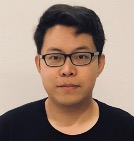“Integrated Circuit and System for Next Generation Communications, Sensing and Imaging”
Tuesday, March 1 at 1:00pm
Via Zoom
Email communications@ece.ufl.edu for Zoom info
Abstract
Today’s CMOS technology scaling allows circuits to operate above 100 GHz, opening revolutionary applications in communications, imaging, and sensing. Future communication and sensing systems will open up more and more applications that can vary from 100 Kbps to 100 Gbps. These heterogeneous networks enable many distinct applications. The vastness of wireless communications and sensing nodes are largely convenient for our lives. However, we are seeing the total energy consumption increases dramatically with the conventional technology. To reduce the carbon emissions and finally achieve carbon neutrality, we should not only come up with new hardware architectures for power efficient wireless communications and sensing system, but also leverage the emerging devices to further reduce computation complexity and power consumption. On the other hand, the conventional sensing technologies including magnetic resonance imaging (MRI) with limited sensing resolution are bulky, heavy, costly and thus available only at dedicated facilities. Therefore, architecture innovations with enhancing communication efficiency are critical for enabling future IoT, 5G, and Beyond 5G communications and sensing systems.
In this talk, I will first discuss a new “transmitter family,” the subharmonic switching (SHS) digital transmitter architecture that largely enhances PA/transmitter efficiency from RF to mm-wave frequencies, enabling high efficiency wireless communications. Based on the proposed architecture, I will walk the audience through a few benchmarking designs with silicon prototypes and measurement results. Secondly, I will introduce the new 5G receiver architecture and high-speed low-power ADCs by leveraging digital signal processing and mixed-signal techniques. Then I will discuss about the next generation on-chip sensing systems, which involves in both MRI sensing and quantum sensing and imaging systems. The proposed sensing and imaging systems can largely minimize the MRI size and beef up the sensing resolution capable of spectroscopy and imaging at the single-cell level. Finally, I will conclude this talk with future research directions of developing next generation wireless communication systems, new circuit opportunities with two-dimensional devices and chip-scale sensing systems for quantum sensing, biotechnology, and subsurface imaging.
Biography
Dr. Aoyang Zhang is currently a postdoctoral fellow at Harvard University. He received B.S. degree from Zhejiang University, Hangzhou, China, in 2014, and the Ph.D. degree from University of Southern California, Los Angeles in 2020, all in electrical engineering. His current research interests include threefold. First, Analog/Mixed-Signal/RF/Mm-wave integrated circuits (IC) design including highly efficient RF/millimeter wave power amplifiers and transceiver architectures for 5G/beyond 5G/IoT/WiFi-7 wireless communications. Second, scalable nuclear magnetic resonance (NMR) and electron spin resonance (ESR) based silicon and GaN quantum sensing and wireless sensing integrated systems for biological sensing, chemical sensing, and subsurface imaging. Third, new circuit architecture with two-dimensional (2D) memristive devices to overcome technological limitations in computational complexity and power consumption.
Dr. Zhang was the recipient of 2021 USC Best Dissertation Award in Electrical Engineering, 2020-2021 IEEE Solid-State Circuits Society (SSCS) Predoctoral achievement award, Ming Hsieh Institute Scholar in 2020, IEEE SSCS Student Travel Grant Award (STGA) in 2018, Best Bachelor Thesis Award in 2014, and the first prize of Chinese National Mathematical Competition in 2010. From 2015 to present, he serves as a reviewer for IEEE Transactions on Circuits and Systems I/II (TCAS), IEEE Solid-State Circuits Letters (SSC-L), IEEE Transactions on Microwave Theory and Techniques (TMTT), and IEEE Journal of Solid-State Circuits (JSSC).

